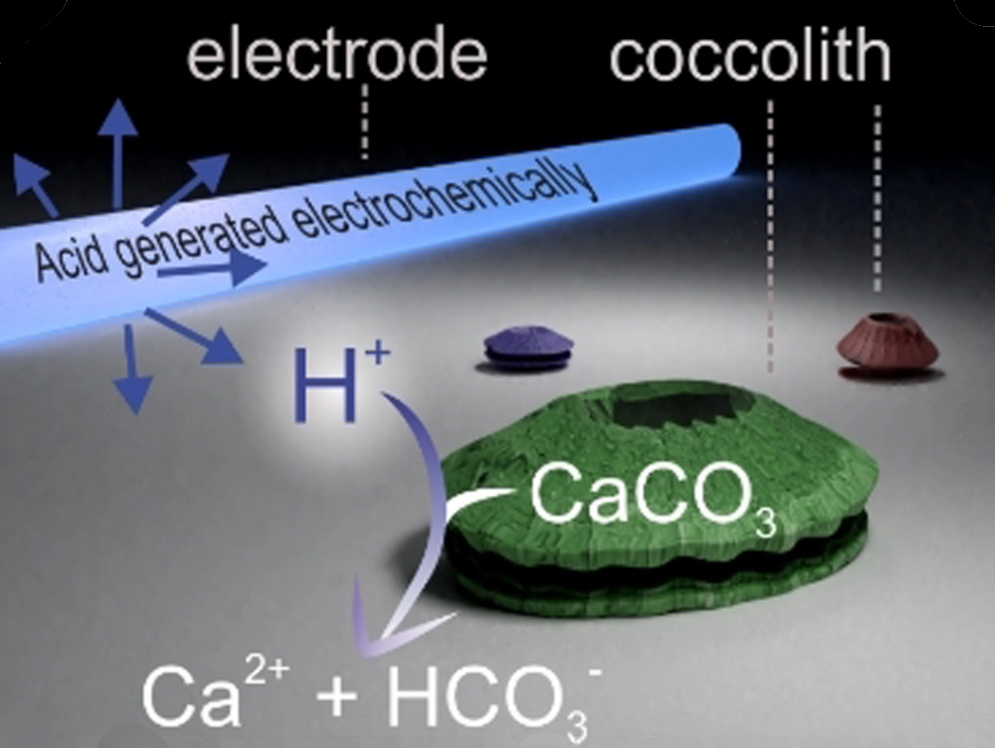Phytoplankton generate half of the atmosphere’s oxygen and are essential to the health of oceanic ecosystems. A major group of phytoplankton, the coccolithophores, secrete plates of calcite to form protective spheres. This group creates over a billion tonnes of “chalk” per year made up of over 1025 individual coccoliths. Dense coccospheres contribute to the “biological pump” of carbon from the atmosphere to the deep ocean. However, their small size makes it challenging to monitor their abundance and degree of calcification. Satellite imagery can measure reflectance from the whiteness of surface blooms, but this approach only yields information about the surface of the water column for large blooms.
Richard G. Compton and colleagues, University of Oxford, UK, have developed a method that combines electrochemistry and microscopy to measure the mass of calcite in an individual coccolith at the picogram level (pictured below). Controlled amounts of acid are electrochemically delivered to a coccolith, which causes dissolution of the calcite structure. The calcium carbonate content of individual coccoliths is revealed by this acid “titration”, using dark-field optical measurements to simultaneously track the shrinkage of the coccolith volume in time-stacked 2D images.

The method is independent of knowledge regarding the species and calibration-free. According to the researchers, it could allow continuous monitoring and reporting of the degree of coccolith calcification in the world’s oceans. This could provide key data for modeling the carbon cycle in the future.
- Opto‐Electrochemical Dissolution Reveals Coccolith Calcium Carbonate Content,
Minjun Yang, Christopher Batchelor‐McAuley, Samuel Barton, Rosalind E. M. Rickaby, Heather A. Bouman, Richard G. Compton,
Angew. Chem. Int. Ed. 2021.
https://doi.org/10.1002/anie.202108435




